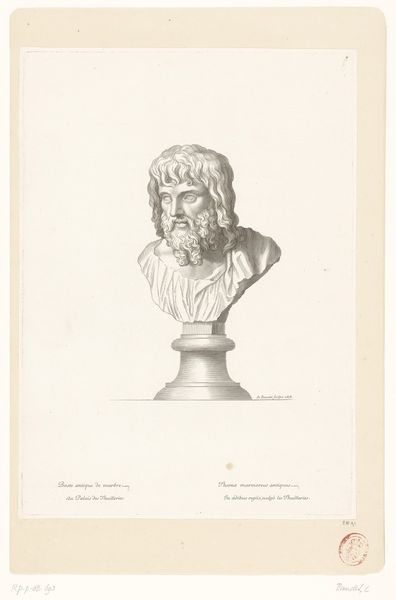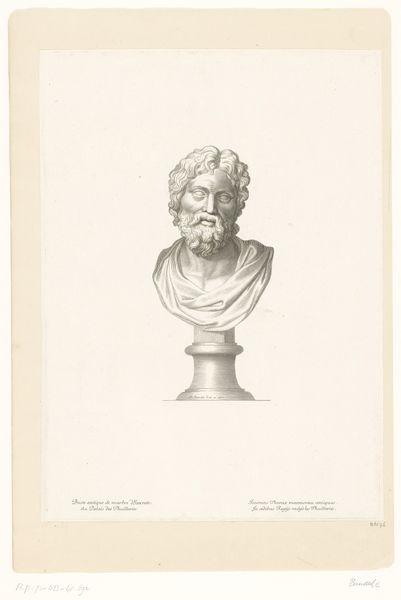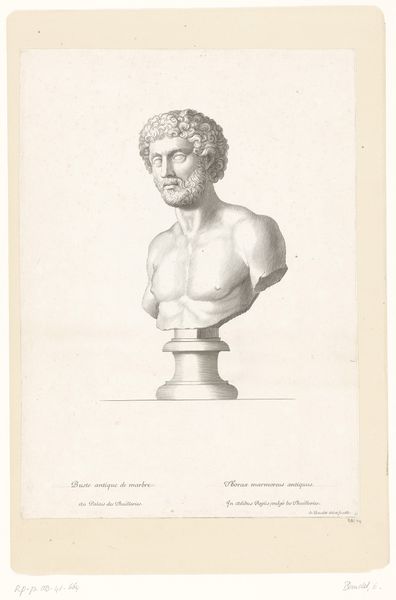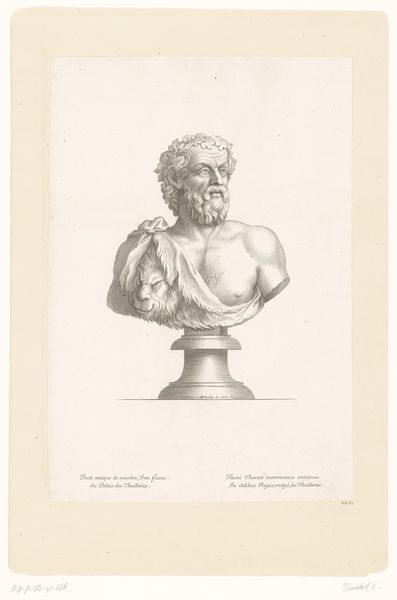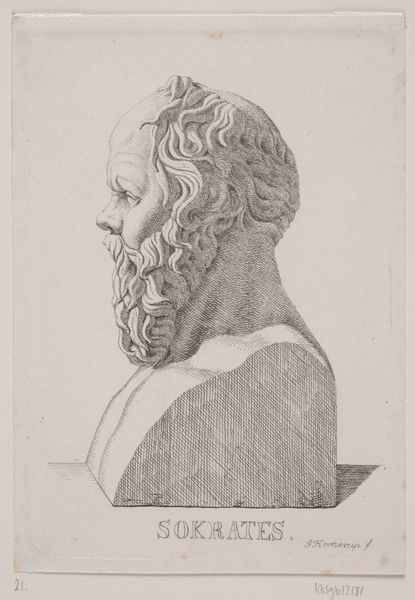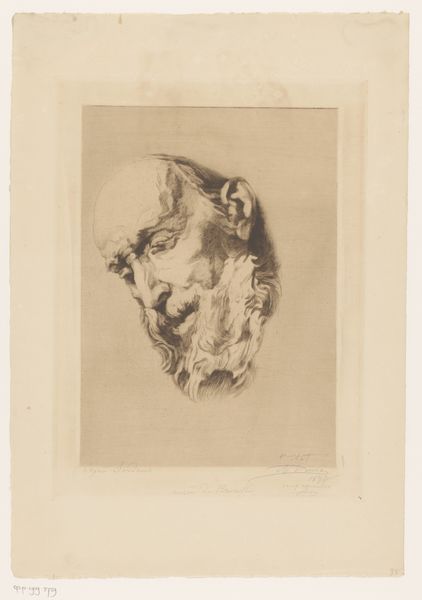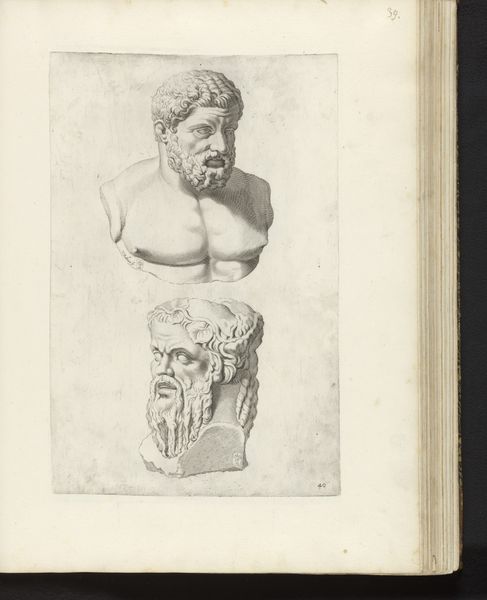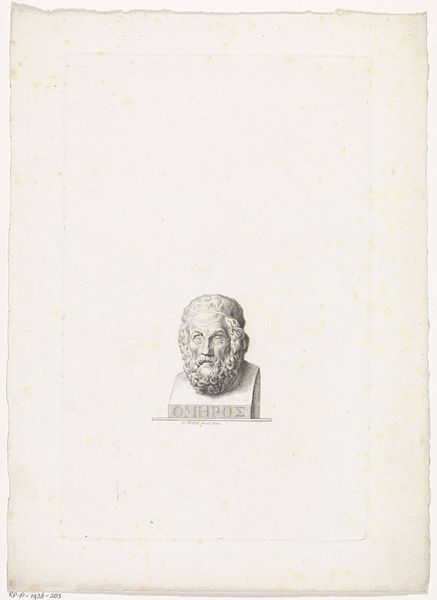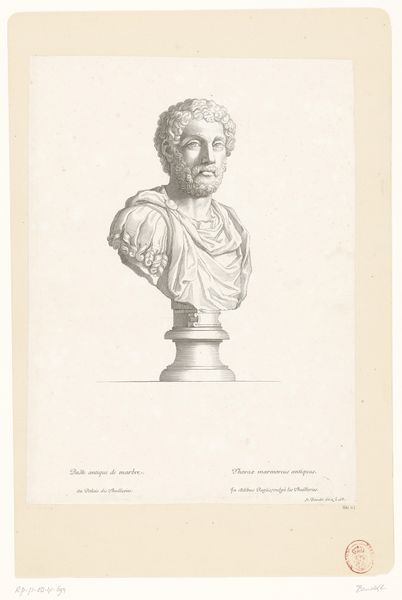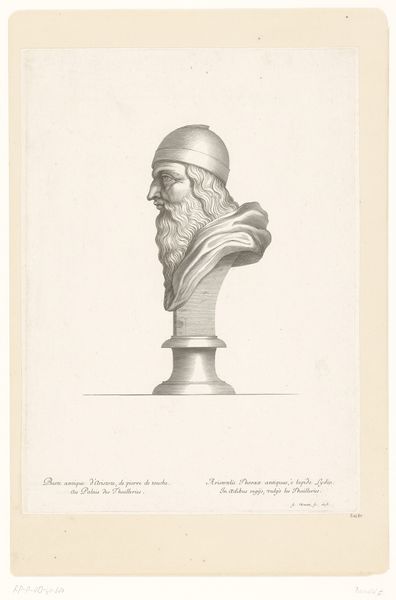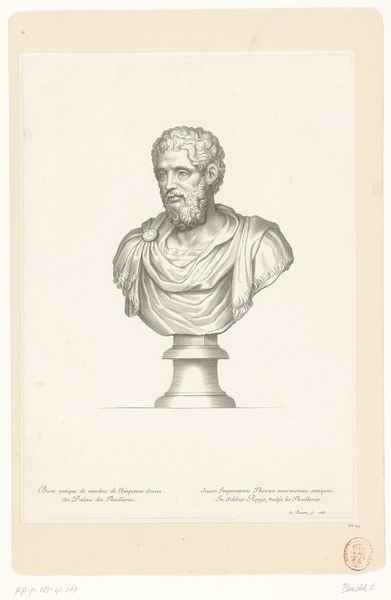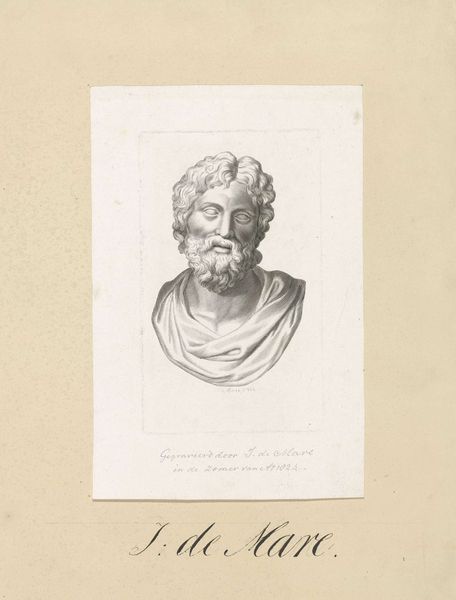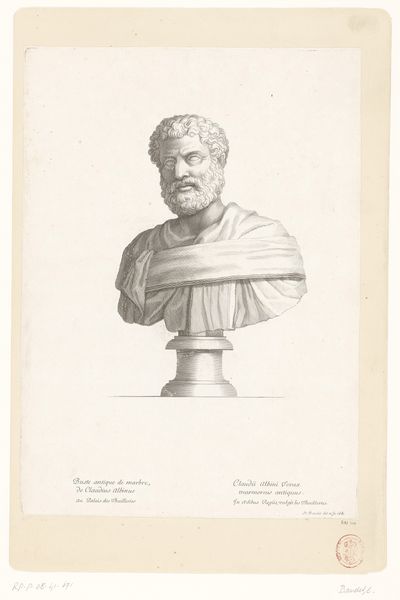
drawing, engraving
#
portrait
#
drawing
#
baroque
#
greek-and-roman-art
#
old engraving style
#
form
#
line
#
history-painting
#
engraving
Dimensions: height 386 mm, width 276 mm
Copyright: Rijks Museum: Open Domain
Curator: Before us is Étienne Baudet’s "Antique Bust of Socrates," an engraving from 1677, capturing the philosopher’s likeness with incredible detail. What strikes you initially? Editor: There’s an immediate somber quality that radiates from the piece, even in the engraving format. The intensity of his gaze, and the aged detail around his mouth give the bust an unsettling depth. Curator: Absolutely. Baudet wasn't just rendering a portrait; he was participating in a long tradition of visually canonizing figures deemed essential to the Western intellectual tradition. The engravings of this era circulated classical knowledge, shaping how generations perceived historical figures. Editor: It’s interesting to think about how this particular representation influences our idea of Socrates, right? This image, etched with precision, reflects a specific baroque understanding of classicism, highlighting the importance of reason in art and politics through form and idealized naturalism. Curator: Consider the societal context too. Images of philosophers were powerful symbols, reinforcing hierarchies of knowledge and wisdom. This particular print might have been used in academic settings, or circulated amongst elites to signal their cultivated appreciation of ancient thought. The artwork served a function, didn't it, legitimizing knowledge. Editor: Definitely. And his intense gaze, while philosophical, also feels... authoritative, I wonder, does it attempt to communicate moral righteousness, considering the historical mistreatment and marginalization suffered by people speaking out and fighting for their human dignity? Curator: A valid question. His work is certainly framed through an understanding of power structures. The piece does communicate the kind of authoritative figure that perhaps reinforces the dominance that ancient history had on later societies and thinking. It makes you wonder how different this artwork would look if viewed with intersectional themes that considered marginalized people. Editor: Exactly, it is a powerful conversation starter, reminding us that historical perceptions aren't static and neutral. This Baroque interpretation frames how later societies approached Socrates's radical challenges. Curator: I agree; it encourages us to think about whose narratives are validated by history and why. Editor: A print with a point. A testament to art's ability to subtly yet powerfully construct the cultural conversation around important historical figures.
Comments
No comments
Be the first to comment and join the conversation on the ultimate creative platform.
